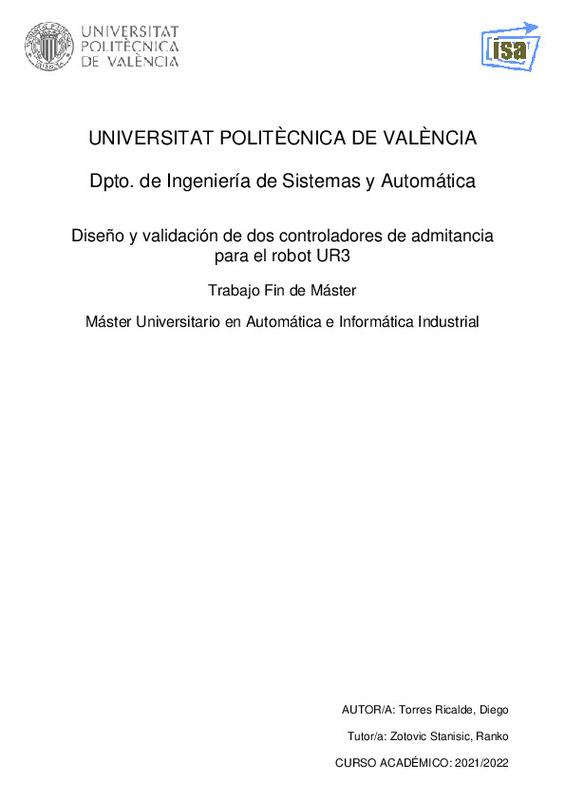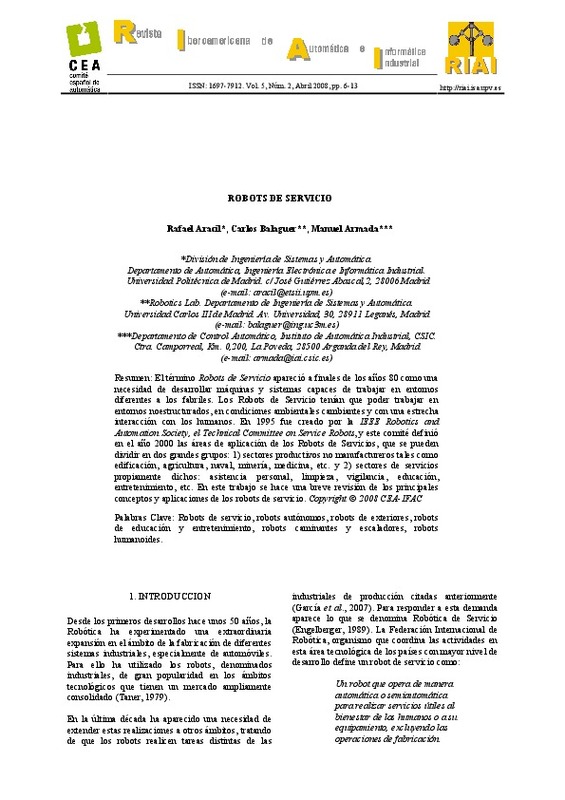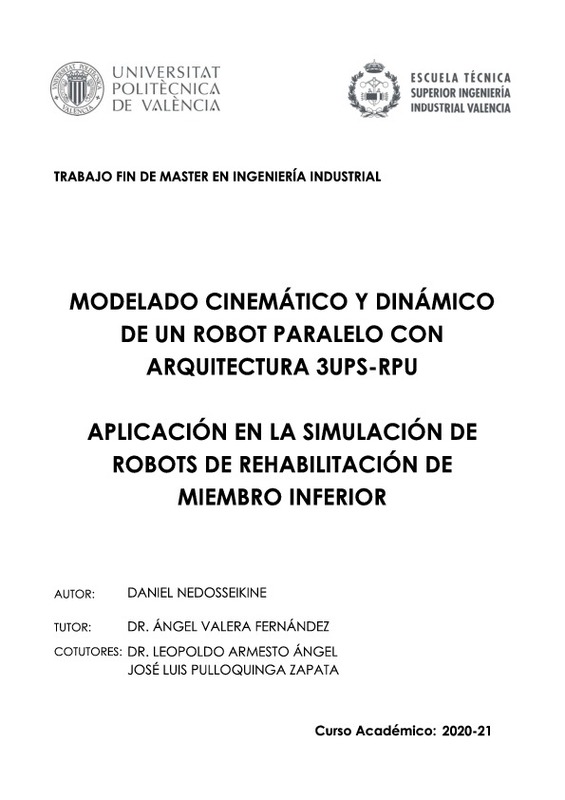|
Resumen:
|
[ES] Este trabajo se enfoca principalmente en la implementación de dos controladores de admitancia distintos en el robot UR3e de Universal Robots. La diferencia entre estos controladores reside en que uno de ellos es capaz ...[+]
[ES] Este trabajo se enfoca principalmente en la implementación de dos controladores de admitancia distintos en el robot UR3e de Universal Robots. La diferencia entre estos controladores reside en que uno de ellos es capaz de modificar la inercia aparente del sistema, mientras que el otro mantiene la inercia propia del robot. De esta manera, la implementación de uno de los controladores frente al otro difiere en gran medida debido a la complejidad de diseñar un controlador que modifique efectivamente la inercia aparente del sistema.
La implementación de estos controladores es posible debido a las características dinámicas propias del robot UR3e, las cuales son exploradas con el fin de establecer las bases para el diseño de los controladores. De este modo, al aprovechar estas características, los controladores diseñados presentan un desempeño bastante satisfactorio al reproducir prácticamente a la perfección el comportamiento deseado.
Así mismo, se exploran las limitaciones del robot UR3e y se proponen soluciones con el fin de permitir que el controlador pueda imponer la dinámica deseada sobre el sistema. Adicionalmente, con el fin de mejorar el desempeño del controlador frente a estas limitaciones, se siguen ciertas directrices cuyo efecto es comprobado mediante los experimentos realizados, obteniendo aun mejores resultados.
Dado que los controladores presentados son capaces de imponer correctamente la dinámica deseada, es posible predecir la respuesta del sistema cuando este interactúa con su entorno si se conocen las fuerzas de interacción, lo que significa que el sistema puede ser simulado en un entorno virtual. La capacidad de hacer esto representa una gran ventaja, puesto que se pueden probar diferentes configuraciones de los parámetros y observar el resultado sin la necesidad de utilizar el robot. Más aun, debido a que la dinámica impuesta por el controlador es la de un sistema masa-resorte-amortiguador, es posible predecir las características del comportamiento que tendrá únicamente en base a los parámetros elegidos.
[-]
[EN] This work focuses mainly on the implementation of two different admittance controllers in the Universal Robots UR3e robot. The difference between these controllers lies in the fact that one of them is able to modify ...[+]
[EN] This work focuses mainly on the implementation of two different admittance controllers in the Universal Robots UR3e robot. The difference between these controllers lies in the fact that one of them is able to modify the apparent inertia of the system, while the other one maintains the robot's own inertia. Thus, the implementation of one of the controllers versus the other differs greatly due to the complexity of designing a controller that effectively modifies the apparent inertia of the system. The implementation of these controllers is possible due to the UR3e robot's own dynamic characteristics, which are explored in order to establish the basis for the design of the controllers. Thus, by taking advantage of these characteristics, the designed controllers present a quite satisfactory performance by reproducing almost perfectly the desired behavior. Likewise, the limitations of the UR3e robot are explored and solutions are proposed in order to allow the controller to impose the desired dynamics on the system. Additionally, in order to improve the performance of the controller against these limitations, certain guidelines are followed, the effect of which is verified by the experiments performed, obtaining even better results. Since the controllers presented are capable of correctly imposing the desired dynamics, it is possible to predict the response of the system when it interacts with its environment if the interaction forces are known, which means that the system can be simulated in a virtual environment. The ability to do this is a great advantage, since different parameter settings can be tested and the result observed without the need to use the robot. Moreover, because the dynamics imposed by the controller is that of a mass-spring-damper system, it is possible to predict the characteristics of the behavior it will have solely on the basis of the chosen parameters.
[-]
|











